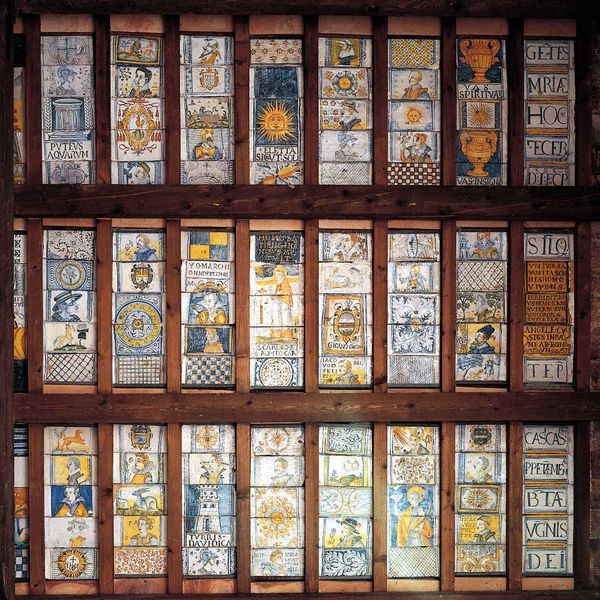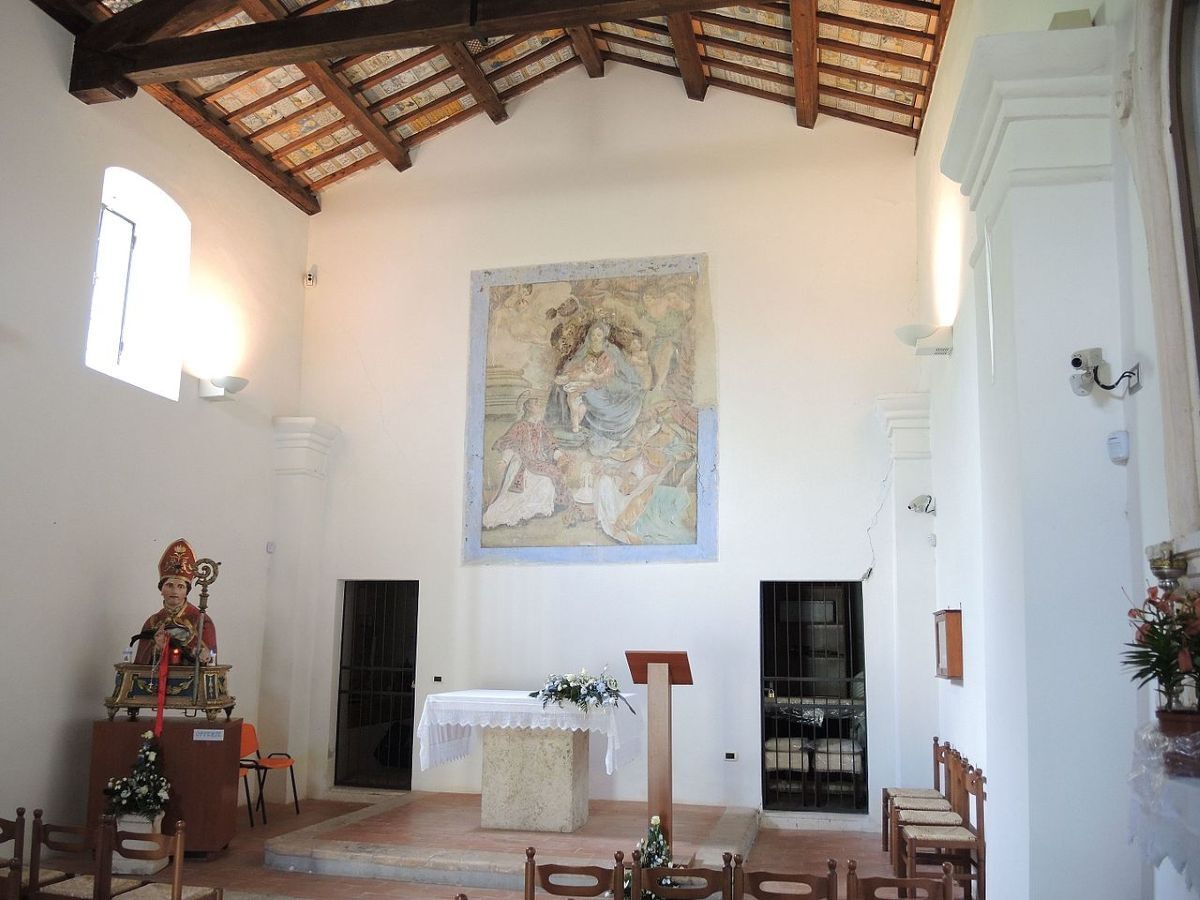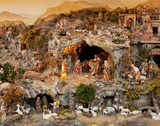Church of San Donato (Chiesa di San Donato) in Castelli, Italy - "The Sistine Chapel of Majolica"
Church of San Donato (Chiesa di San Donato) in Castelli, Italy - "The Sistine Chapel of Majolica"
The Church of San Donato, located near the Italian town of Castelli, is renowned for its ancient and precious tradition of ceramic art.
The Church of San Donato (Chiesa di San Donato) in Castelli, Italy owes its fame to the beautiful majolica ceiling which earned her the nickname "The Sistine Chapel of Majolica". The approximately 800 bricks that make up the ceiling, bearing the dates 1615, 1616, 1617, depict geometric motifs, coats of arms and heraldic emblems, floral ornaments and decorations, images from the animal repertoire and, above all, religious figures, symbols and inscriptions.
The Church of San Donato in Castelli is rather plain with an anonymous exterior, typical of Italian country parish churches. It contains a single nave, preceded by a low portico. But don't let this simple interior disappoint you. Look up to the heavens and be amazed by an original majolica ceiling of dazzling beauty. The sloping trusses are divided into compartments where over eight hundred majolica tiles decorated in shades of yellow, orange, green and blue coming from the palette of the artists of Castelli, sit sandwiched by beams.

Very little is known about the Church of San Donato. Legend says that in the 15th century a shrine dedicated to the Madonna del Rosario was built here, which contained a decorated brick ceiling. Started as a country church by the Orsini family and assigned to a Benedictine friar, San Donato with its little porch attached to the front probably originally served as a haven to give hospitality to area shepherds. At the beginning of the 17th Century, the church was enlarged and decorated. In 1615-1617, a new ceiling was installed replacing the older one. The bricks are made of majolica, a porous paste covered with hot-solidified enamel and decorated with religious images alternate with invocations, geometric motifs, and male and female figures.
The original ceiling of San Donato, which dates back to the 16th century and is attributed to the workshop of Orazio Pompei, was removed and reused as the floor of the altar of San Donato during the renovations.

Looking up at the first section of the San Donato ceiling, one is introduced by the words of the Magnificat: “exultavit spiritus meus in Deo salutari meo quia respexit humilitatem ancillae suae” (My spirit rejoices in God my Savior, because he has looked with favor on the lowliness of his handmaid.), accompanied by the text of the Lord’s Prayer and the verse of the Matins: “Domine, labia mea aperies” (Lord, open my lips). Looking down upon us are some of the most popular saints: Saint Anthony of Padua, Saint Lawrence, the Madonna and Child as well as the faces of nobles and artisans (including an Antonio Mercurio, dated 1615) alternate with images of animals and elaborate geometries.

Other areas of the ceiling contains “selfies” of numerous ceramists from Castellana who wanted to pass on to posterity their faces and their autographs immortalized in majolica. Among the other saints, a large San Carlo Borromeo stands out. There are many geometric virtuosities (the King Solomon knot stands out), coats of arms, arabesques and rosettes. And then there is a widespread Marian devotion that translates into the images of traditional invocations and litanies: Sedes sapientiae, Puteus aquarum, Domus aurea, Eletta sicut soli, Turris davidica, Vas spiritualis, Vas insignae devotionis…
During the 19th century, the 16th century floor of the altar was dismantled and was then preserved in the town hall of Castelli until it was placed in the Museum of Ceramics where it can still be admired today.
Reproductions of these exquisite tiles which are still hand-painted in Castelli, Italy are available through Merchant of Prato.








